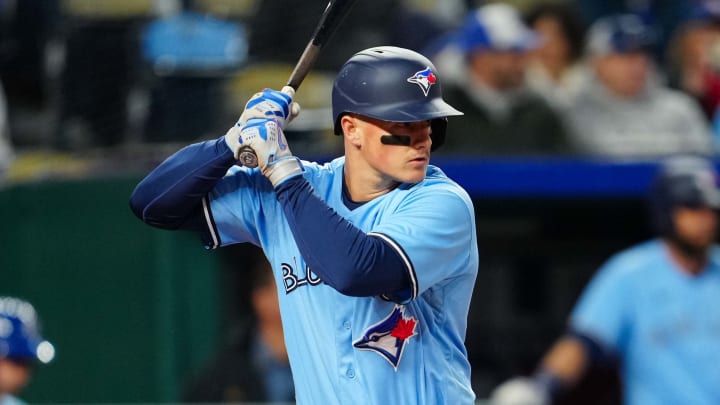Matt Chapman’s Critical Offensive Adjustment Is Arriving Right on Time

Matt Chapman had tried an early setup and a leg kick, and neither had made him the MVP candidate he knew he could be. So, this winter, he turned to the last timing mechanism left.
“That was pretty much the only other load I hadn’t tried,” he says, grinning. “So the toe tap it was.”
He’s smiling a lot these days. At 18–11, his Blue Jays are the third-best team in the American League. (Unfortunately the first two also play in the East.) One month into the season, FanGraphs gives them an 85.3% chance of making the playoffs. And much of their success stems from that toe tap: Since he implemented it, Chapman—who at 30 will become a free agent after this season—has been the best position player in the sport.
In April, he led the AL with a .384 batting average and .465 on-base percentage, and the majors with 68 total bases and 15 doubles—as many as he hit in 151 games in 2021. Including his excellent defense at third base, Baseball-Reference calculates that he has been worth 2.0 wins above replacement already this year.
He tried the toe tap, Chapman says, because after three disappointing seasons, “I just wanted to use the whole field a little bit more, because I did it in years past. I wanted to get back to what I was doing in ’18 and ’19, using the whole field and driving balls the other way.”
His first indication that his plan was working came, perhaps surprisingly, during a 9-for-46 spring training.
Chapman made a lot of outs, but “his swing was really good,” says hitting coach Dave Hudgens. Manager John Schneider says, “We were like, ‘O.K., you’re putting the ball in play hard to the right side with two strikes. Great. That’s a win.’”

In some ways, actually, just a normal spring training constituted a win. Chapman, then the A’s third baseman, tore the labrum in his right hip in 2020 and spent that offseason rehabbing after surgery. The next year, the lockout interrupted his communication with Oakland’s staff; less than a week after the league and the union agreed to a deal and Chapman reported to the A’s facility in Mesa, Ariz., the team continued its fire sale by trading him to Toronto—which trains in Dunedin, Fla.
“The short spring training last year with the lockout and then being traded to a new team—I think he wanted to do too much,” says Schneider. “So I think kind of just settling into a good routine, being comfortable with players and staff around him—that's kind of been a big part of it, too.”
Chapman finished seventh in AL MVP voting in 2018 and sixth in ’19, but hindered by the hip injury and recovery, he began selling out for power, hitting the ball to his pull side and in the air more than ever before in his career. The result: a .221 batting average and a .746 OPS over the next three seasons. In this offensive environment, that actually made him 9% better than league average. His coaches are quick to offer praise: “It’s really hard to hit and it’s even harder to be consistent,” says Hudgens. “You forget, he’s still technically kind of young,” says Schneider.
But Chapman is the kind of person who thinks any season in which he does not win a Gold Glove means he needs to work on his defense, so he set about fixing his offense, too.
Enter the toe tap—as well the mentality that helped him use it.
Blue Jays center fielder Kevin Kiermaier, who spent the first nine years of his career with the Rays, had long admired Chapman from afar; from up close, he says, he is blown away.
“I had no idea how strong he was,” Kiermaier says. “It shows on both facets of his game. In batting practice, he’s just launching stuff [to the] opposite field, and taking grounders in his cut-off sleeves, I’m like, ‘Damn, I didn’t realize Chappy was that jacked!’”
Chapman did not entirely realize how strong he was, either. “I think realizing that he can hit the ball out to right, he can hit the ball to center, he doesn't have to cheat to try to generate some power—I think that really kind of resonating with him has been a big thing, too,” says Schneider. “Then it just comes down to pitch selection and just contact point, knowing that he can back the ball up back here as opposed to trying to hit it out.”
Hudgens says, “I think he's just learning a lot about his swing and what it takes to be successful. He's always kind of had that Oakland A’s swing decision: Get a good pitch to hit, take your walk, that kind of thing. If you want to be an elite hitter, you need to do that. And I think when he hits those drives to right-center field, [he’s like,] ‘That’s the feel I want.’ And so you try to keep that feel.”
Chapman is healthy, he’s locked in and he’s in his walk year. In many ways, his timing is perfect.
